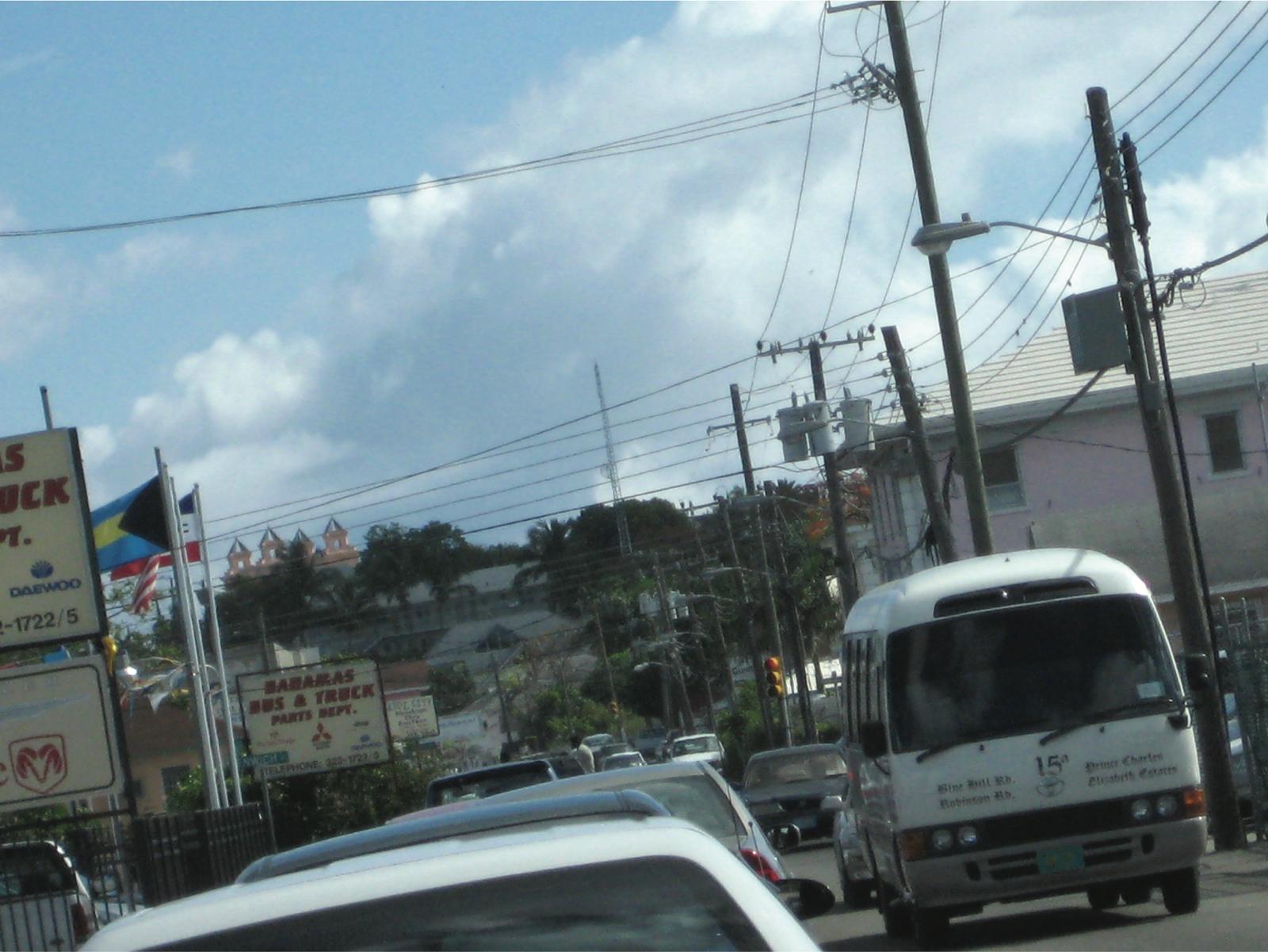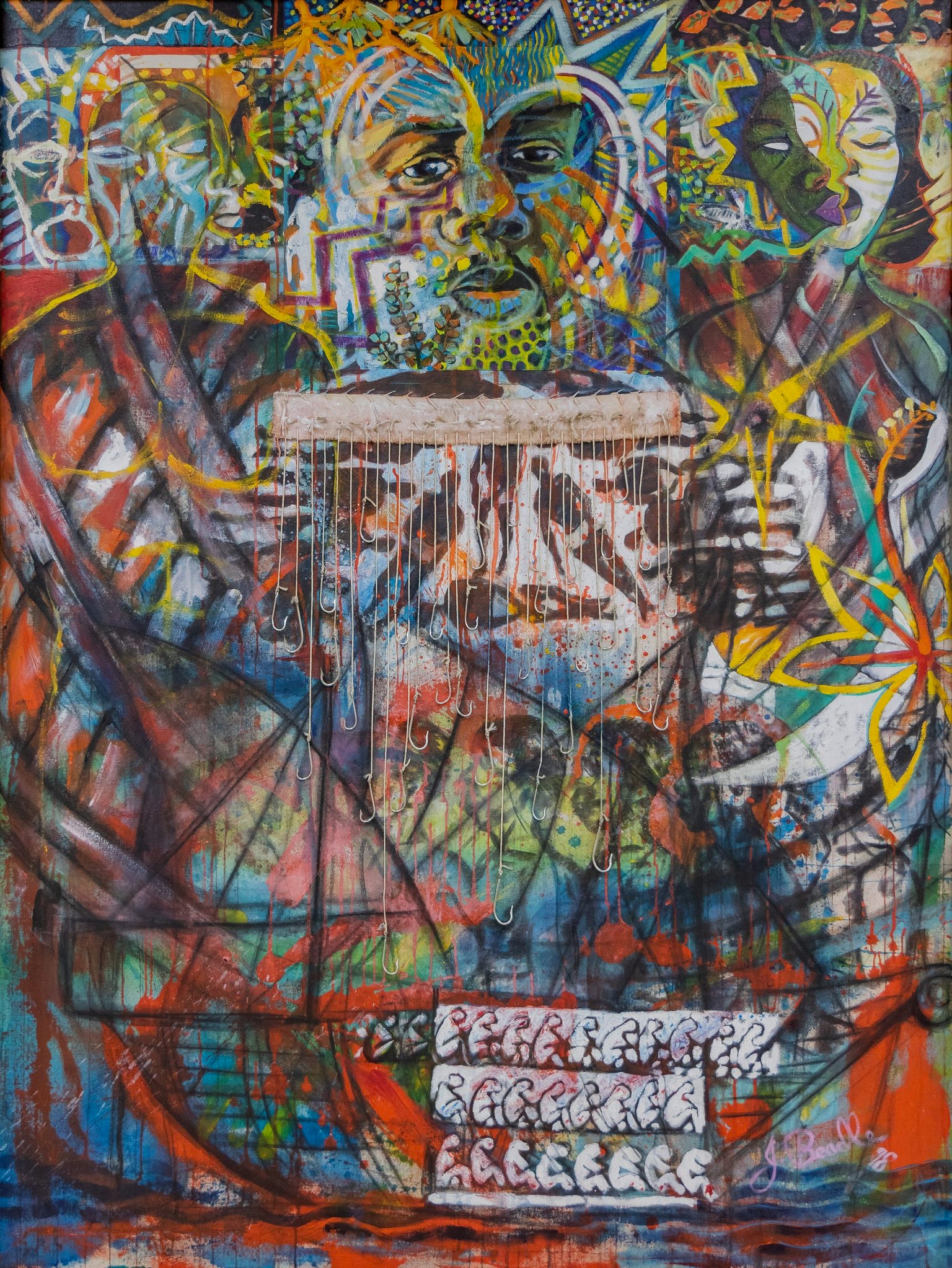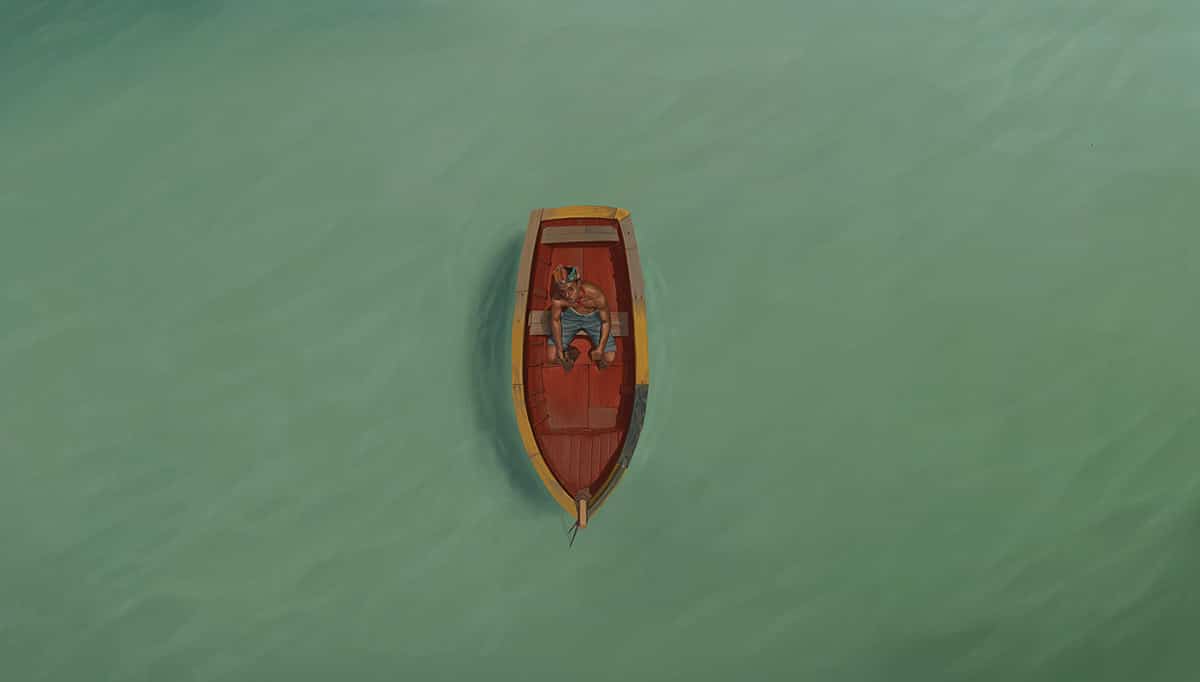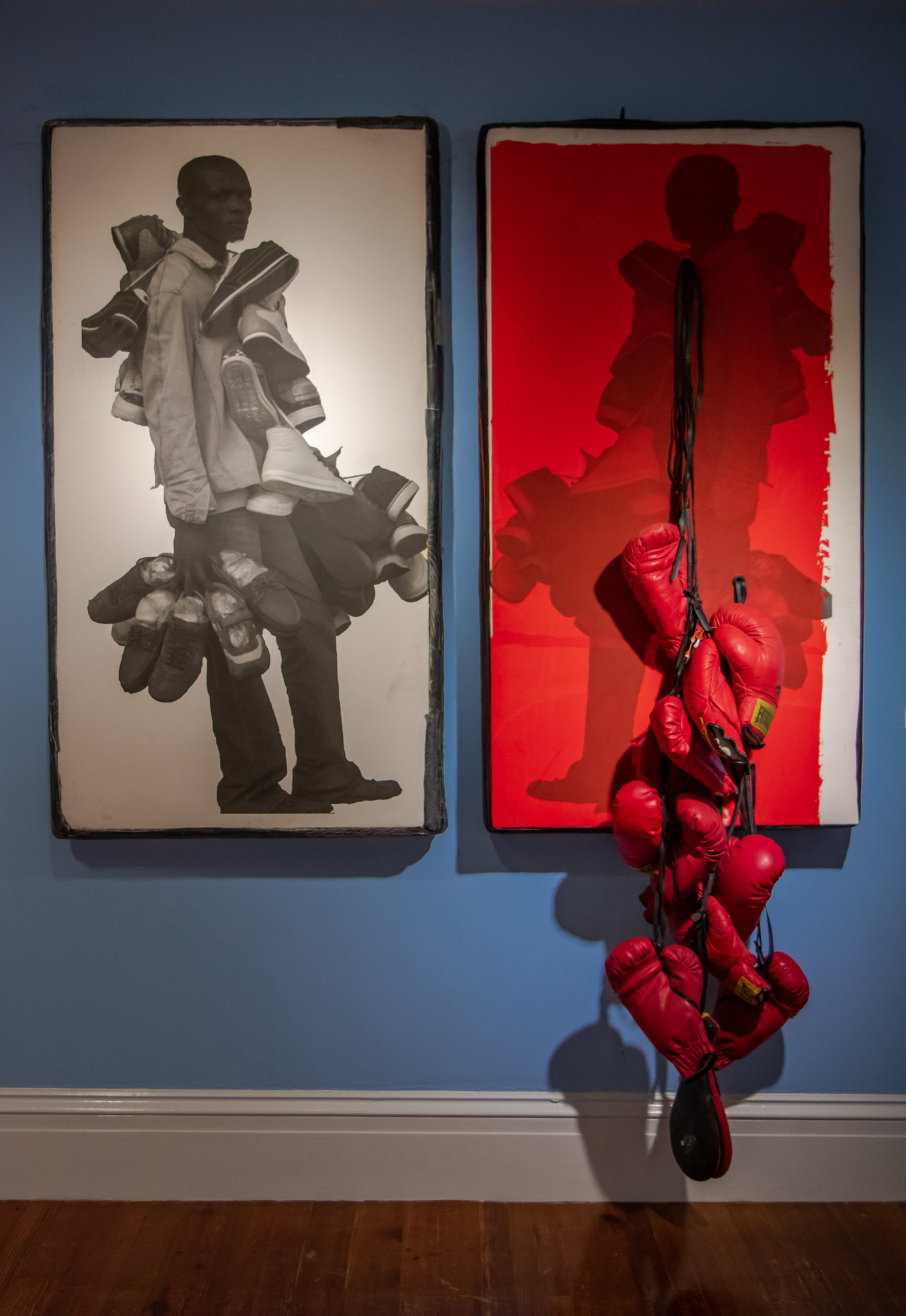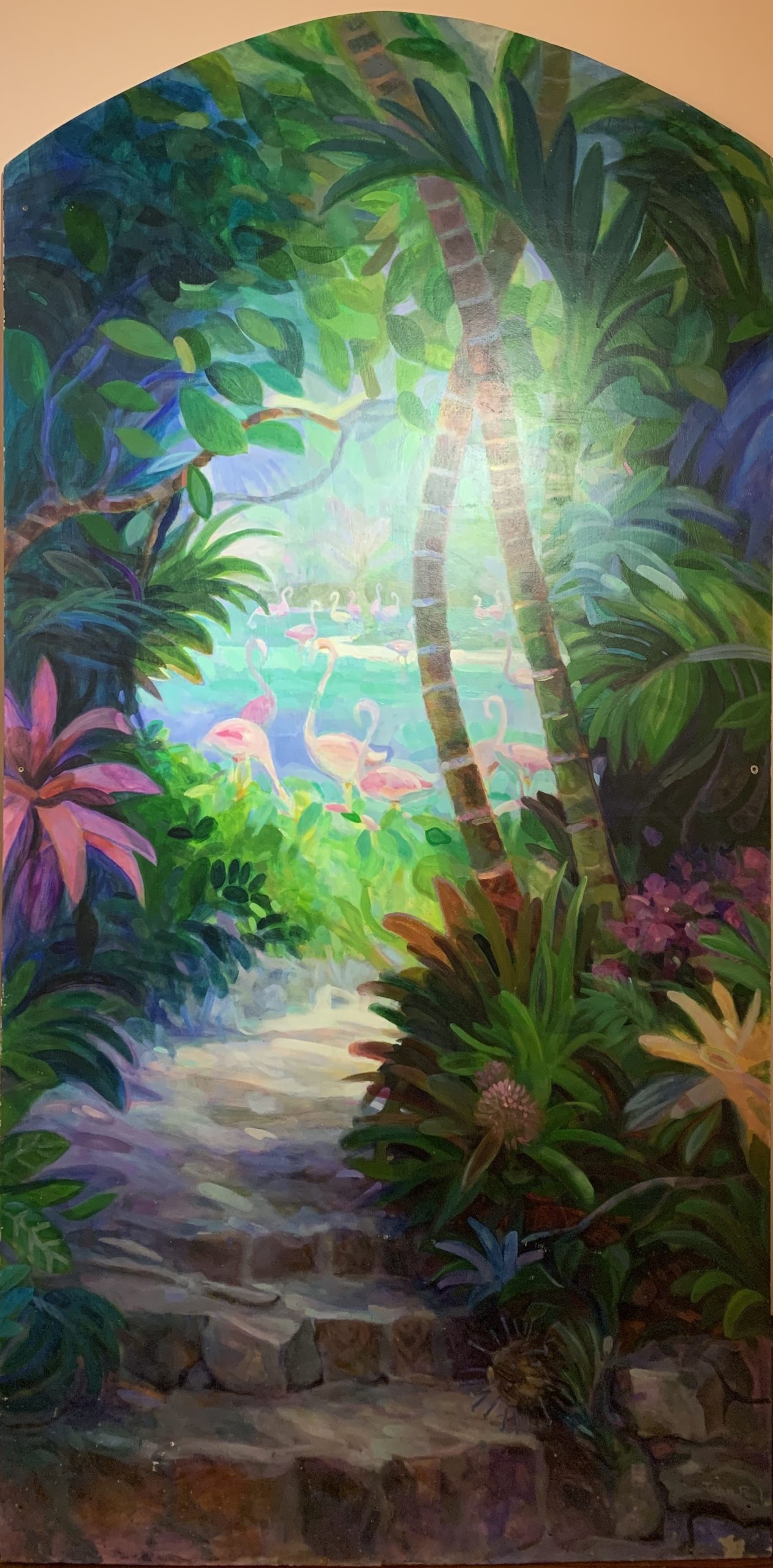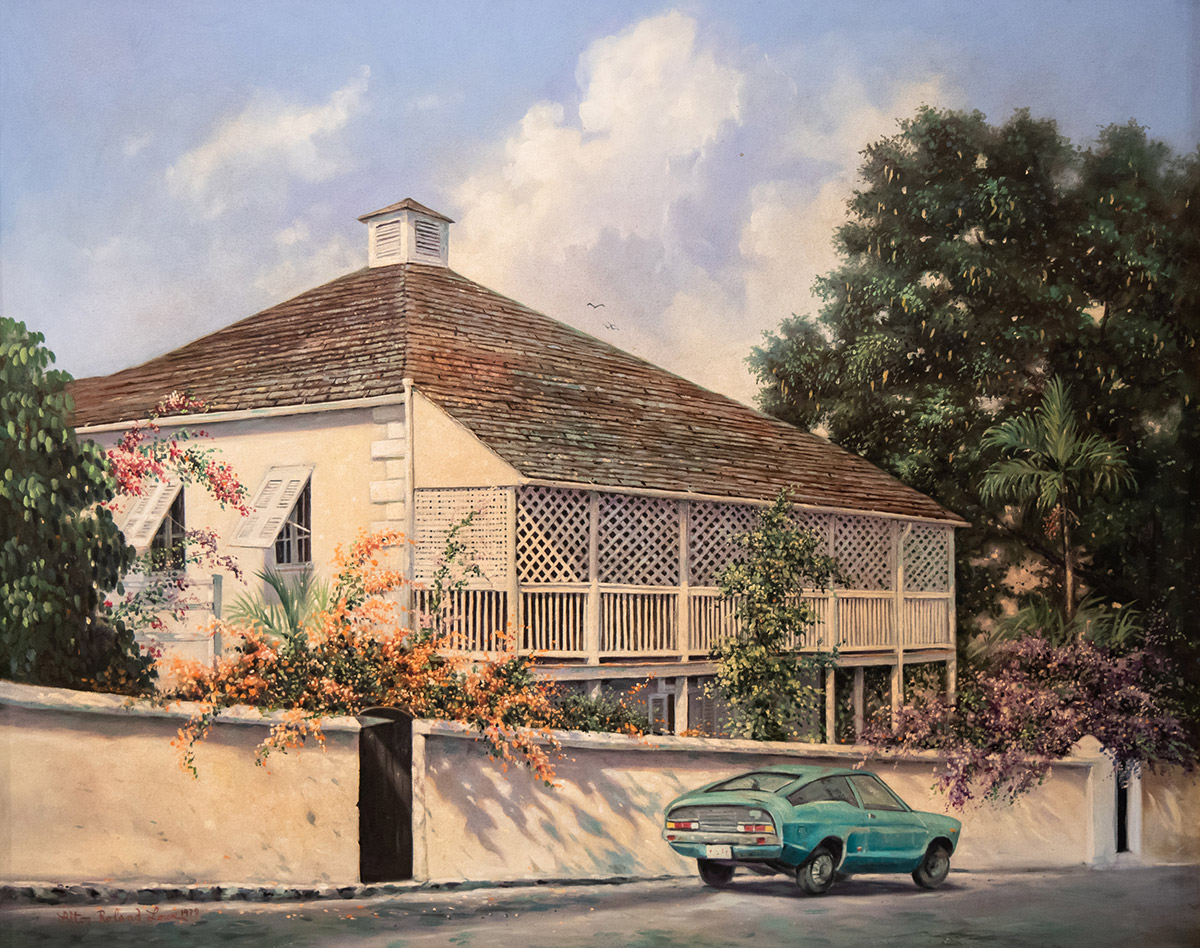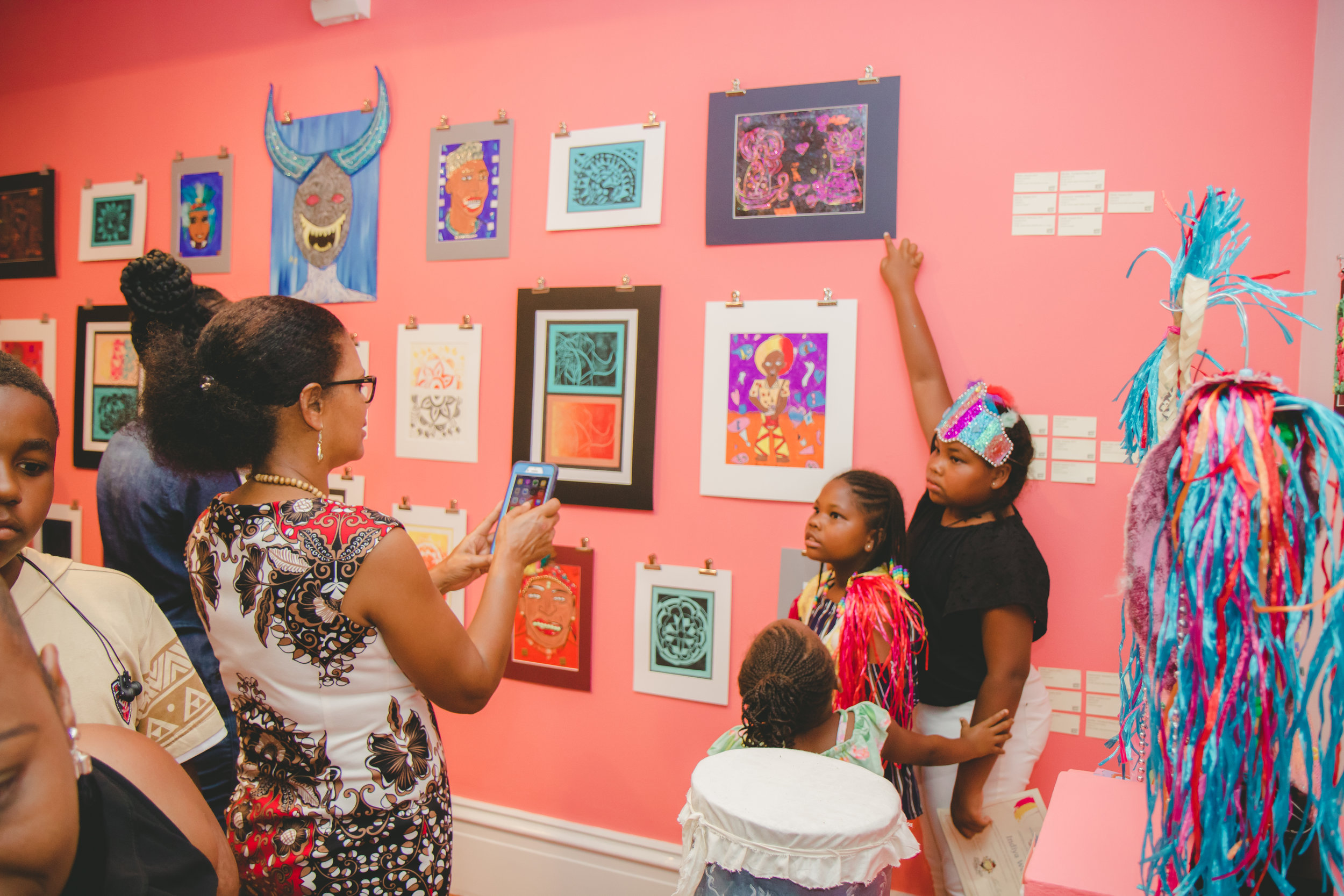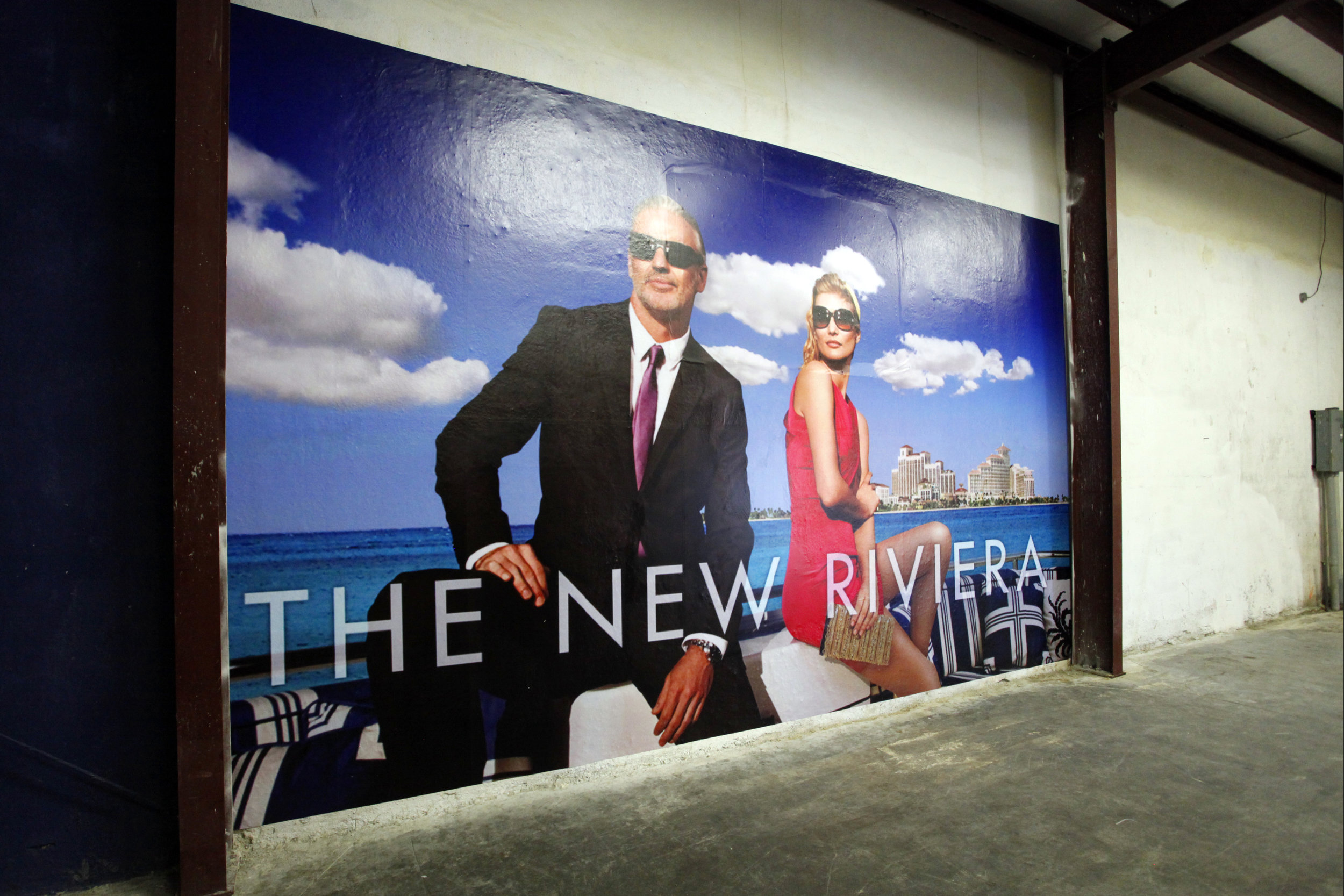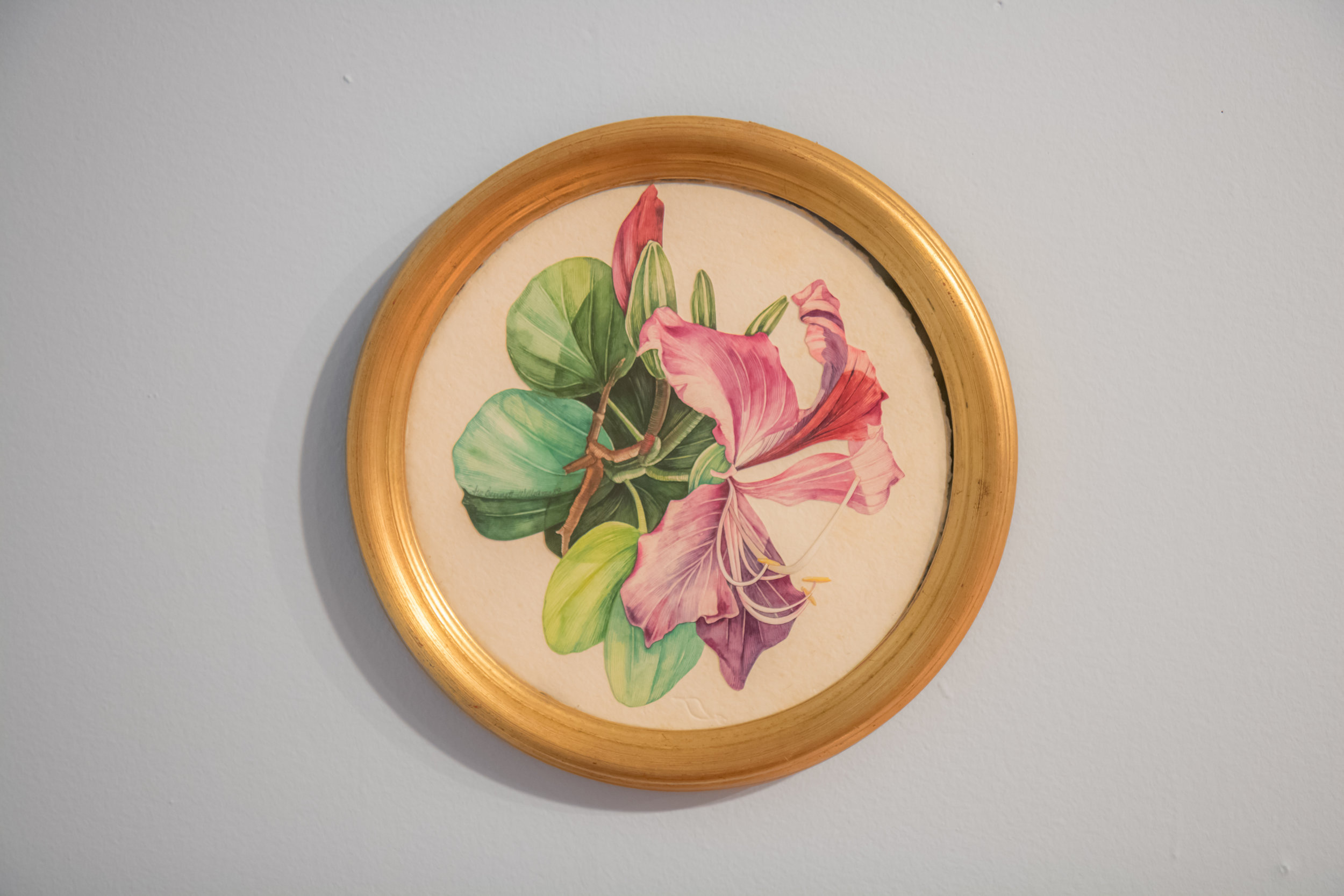By Natalie Willis. Landmarks are such a common way to give directions we often think nothing of it. In some cities it could be the tallest building, in most, it was historically a cathedral as it was in old Nassau, and in others still an old water tower. Landmarks hold significance, they become a fixed point of reference that we navigate around or through, often in the periphery just so that your little satellite of a body knows where it is in relation to this sentinel. Heino Schmid’s video artwork “North Star” (2007-8), first shown as part of NE4, the Fourth National Exhibition back in 2008, gives us a moment to consider the significance of having the imposing and distinctive structure of the Atlantis hotel as a marker within our landscape.
Currently browsing: Stories
We Live at the Undersides
Resilience in the era of climate crisis and finding the fraternity in loss after Hurricane Dorian. Two years ago, I wrote an article on the impact of Hurricane Irma on the loss of cultural material and the devastation of the landscape, lamenting the single death we sustained here, how we “lost two cultures that day”. I spoke about how many of us, in light of the nature of our dotted, disparate geography, felt the smallest sigh of relief that the more inhabited islands of New Providence and Grand Bahama were not hit, though it did little to soothe the loss of life and property in the Southern Bahamas. This year, I write about another Category 5 storm. This year I write about such heart-piercing loss of life that it’s hard to contemplate how much material loss there is. This year, I write about what happened to one of those “more inhabited” islands, the island I have called home for most of my life, and how the culture and people I grew up with Grand Bahama are underwater, and Abaco all but washed away.
Climate Refugees: On Becoming Climate Refugees or Building Back Differently
By Dr Ian Bethell Bennett, The University of The Bahamas. After hurricane Irma hit Ragged Island in 2017 that island was declared uninhabitable given the loss and damage to this small island in the Southern Bahamas. The community was told it would be the first green island in The Bahamas. From this tragedy, grew an initiative to explore how we could rebuild better and retain the lifeways of the small community on Ragged Island. “Hot Water” was an exhibition under the wider project of the Double Dutch series at the National Art Gallery of The Bahamas (NAGB) in August 2018 that drew on best practices and the work and ethnographic research conducted on the ground in Ragged Island by faculty and students of the University of The Bahamas and members of the arts collective Plastico Fantástico. The work has continued on the project, yet government’s words have vanished into a boiling sea of tsunami waves. The art of living in the tropics was some of the writing derived from the research and documentary that supported the show. We find now that the art of living in the tropics has continued and needs to be a sustained topic of a dynamically changing conversation: how do we retain life in the tropics, become refugees to climate change and flee the islands we inhabit? As the sea levels rise around barely sea-level islands, we face new threats to our existence. As the climate crisis advances, which includes rising temperatures as well as more severe storms, we see the increase in hurricanes or mammoth storms that come through annually during hurricane season.
“Duran Duran”: Exploring Themes of Longevity and Survival in Kendra Frorup’s Work
By Blake Fox. Conservation of artworks is a crucial tenet of museums. Richardo Barrett, the curator of the new re-hang of the NAGB’s Permanent Exhibition (PE), “TimeLines: 1950-2007,” has worked in the Bahamian visual arts community for six years. In a speech at the unveiling of the new hanging, he noted the broad range of materials that he has encountered—including art made from sturdy ceramic, over to ephemeral seeds. Barrett further expressed his interest in—and the importance of—the survival of these materials for years to come. The conversation surrounding materials–the impermanent and the enduring–has been crucial in the curation of the recent rehanging of the Permanent Exhibition. The museum is having to ask and answer difficult questions around how we conserve works to ensure that they survive–especially in our tropical, humid climate–for generations to come.
From the Collection: John Paul Saddleton’s “West Hill Hidden Garden”
The Daily Escape
By Diana Sands. When the new Permanent Collection Exhibition opened on August 5th, 2019 at the National Art Gallery of The Bahamas, I was immediately drawn to John Paul Saddleton’s West Hill Hidden Garden painting. Something about it spoke to me in a profound way. As a result, I found myself going back to see it many times since (often when I should have been working). The contrast of the darker hues of the shade against the bright airy light of day in the background continues to tug at my imagination. In truth, it has become a bit like a seductive loadstone.
From the Collection: “The Deanery” (1979) by Alton Lowe
Epistemic and Cultural Violence: Powercutting as Light
Anibal Quijano (31 May, 2019) and Toni Morrison (5 August, 2019) – two great thinkers have gone. Nicolette Bethel’s 1990 play, Powercut, produced and performed at the Dundas Centre for the Performing Arts, shows what happens in the dark. Nowadays, lights drop into darkness at least once a day for hours at a time. The violence of structures invisible to the naked colonised eye is only ever gossiped about. We are afraid to cease being what we are not, we do not know how to be who we are. It is the culture of violence and silence revealed through ‘discussions’ around tourism and prostitution, two interlocked economies of pleasure. The Victorian Bahamas avoids discussing these things in the same breath, yet the exoticisation and tropicalisation of space and place speaks to a reality of total erasure of self for what we are not, to pick up on Quijano’s statement. In “The Visual Life Of Social Affliction,” the upcoming Small Axe Project exhibition which opens at the NAGB on Thursday, August 22nd, we see what we are taught/made not to see; we see the violence of not seeing who we are and the trauma of being held in bondage through invisible structures. Powercut reveals a lot of the invisible structures, as do the works of recently departed thinkers Anibal Quijano and Toni Morrison.
Summer Camp ends on a festive note: MMASC Exhibition and Awards Ceremony held at the NAGB
By Katrina Cartwright. On the evening of Thursday, August 1st, 2019 the National Art Gallery of The Bahamas welcomed over 250 individuals to the exhibition opening reception and awards ceremony for its annual Mixed Media Art Summer Camp (MMASC). Attendees were comprised of MMASC campers and camp counsellors, their families and friends, NAGB supporters and staff who all came out to support our young budding creatives who spent 2-4 weeks during the month of July working hard to create one-of-kind artworks that spoke to the camp’s theme “Parading through the Caribbean.” Although the weather was determined to put a damper on the celebration of a major accomplishment for the campers, it could not quell their excitement and joy and the pride of their supporters. Patient parents and friends squeezed into the hot and humid confines of the NAGB’s upper veranda and clapped loudly when awards were distributed and short performances by campers and counsellors were done.
The Visual Life Of Social Affliction: Structures of Violence in the Caribbean
Structural violence is rife and regionwide. At least we are here, even if we may be. In Bahamian artist Blue Curry’s “The New Riviera”(2014), we are not even here. This erasure of us from the scene is yet another form of unperceived structural violence, as we can also see in Curry’s “Nassau From Above” (2004).
From the Collection: “Poor Man’s Orchid” (1989) by Sue Bennett-Williams
By Natalie Willis. a portal into the practice of a dedicated educator. The 19th Century marked a period in Britain known as Orchidelirium. Not entirely unlike the Dutch tulip fever, this flower-frenzy was a mad scramble for the exotic, elusive orchid. They became connotative as a symbol of wealth, prestige and knowledge, of the affluence required to secure these items from far-off lands. Sue Bennett Williams’ “Poor Man’s Orchid” (1989) is no such thing and no less beautiful.
